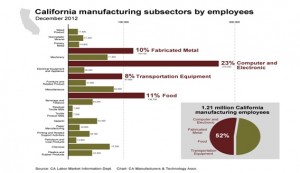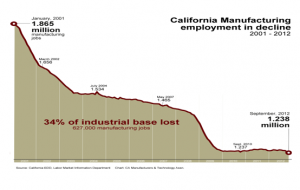Hardly a week goes by without a report of Chinese “hacking” or Intellectual Property Theft, so it was no surprise that a published analysis by CrowdStrike, a California-based cyber security company, revealed that China violated its cyber agreement with the United States the very next day after CNBC reported that President Obama and China’s President Xi Jinping agreed to not conduct cyber theft of intellectual property on Friday, September 25, 2015. President Obama said. “The United States government does not engage in cyber economic espionage for commercial gain, and today I can announce that our two countries have reached a common understanding on a way forward.” However, the U.S.-China agreement “does not prohibit cyber spying for national security purposes.”
It is interesting to note that the day before the announcement, September 24, 2015, Chet Nagle, a former CIA agent and current Vice President of M-CAM, penned an article in the Daily Caller, stating, “At FBI headquarters in July, the head of FBI counterintelligence, Randall Coleman, said there has been a 53 percent increase in the theft of American trade secrets, thefts that have cost hundreds of billions of dollars in the past year. In an FBI survey of 165 private companies, half of them said they were victims of economic espionage or theft of trade secrets — 95 percent of those cases involved individuals associated with the Chinese government.”
He blamed the corruption of Chinese government officials for the problem and stated that “President Xi Jinping has instituted a strict anti-corruption campaign. Regrettably, the campaign has focused on “tigers” — senior government officials — at the expense of eliminating the rampant corruption by the “flies” — officials at the provincial and local level. In any event, putting a dollar value on direct corruption does not address the totality of the costs. Business confidence and foreign direct investment in China are already falling because of the absence of the rule of law.”
He concluded, “China’s disregard of the rule of law should be the underlying driver for all discussions of commercial topics during the coming visit of China’s president. Lack of the rule of law is the most difficult challenge American enterprises face in China.”
In researching this topic, I found out that three years earlier, May 22, 2013, the bipartisan Commission on the Theft of American Intellectual Property of the U.S. International Trade Commission released a report. Dennis C. Blair, former Director of National Intelligence and Commander in Chief of the U.S. Pacific Command, and Jon M. Huntsman, Jr., former Ambassador to China, Governor of the state of Utah, and Deputy U.S. Trade Representative, were the Co-chairs of the Commission.
The day after the release, Forbes published an article about the report, stating that “China accounts for at least half – and maybe as much as 80 percent – of U.S. intellectual property theft.” The article briefly discussed the problem of China’s Intellectual Property theft and included quotes from the co-chairs, but did not go into any detail about the recommendations of the Commission.
The article did provide the link to the 100-page report, which I have since read. In view of the continuing problem, it is time to reconsider the key findings of the report, titled, “The Impact of International IP Theft on the American Economy”:
- ”Hundreds of billions of dollars per year. The annual losses are likely to be comparable to the current annual level of U.S. exports to Asia—over $300 billion…”
- Millions of jobs. If IP were to receive the same protection overseas that it does here, the American economy would add millions of jobs.
- A drag on U.S. GDP growth. Better protection of IP would encourage significantly more R&D investment and economic growth.
- The incentive to innovate drives productivity growth and the advancements that improve the quality of life. The threat of IP theft diminishes that incentive.
The report stated, “A core component of China’s successful growth strategy is acquiring science and technology. It does this in part by legal means—imports, foreign domestic investment, licensing, and joint ventures—but also by means that are illegal. National industrial policy goals in China encourage IP theft, and an extraordinary number of Chinese in business and government entities are engaged in this practice.”
The report stated that existing remedies are not keeping up with the problem because of:
- Short product life cycles – “the slow pace of legal remedies for IP infringement does not meet the needs of companies whose products have rapid product life and profit cycles.”
- Inadequate institutional capacity ? a shortage of trained judges in developing countries
- China’s approach to IPR is evolving too slowly – “improvements over the years have not produced meaningful protection for American IP.”
- Limitations in trade agreements? there are also significant problems in the WTO process that have made it impossible to obtain effective resolutions. “Bilateral and regional free trade agreements are not a panacea either.”
- Steps undertaken by Congress and the administration are inadequate.
The Commission recommended short-term, medium-term, and long-term remedies. The short-term measures are immediate actions that are largely regulatory or made effective via executive order and include the following:
- Designate the national security advisor as the principal policy coordinator for all actions on the protection of American IP.
- Provide statutory responsibility and authority to the secretary of commerce to serve as the principal official to manage all aspects of IP protection.
- Strengthen the International Trade Commission’s 337 process to sequester goods containing stolen IP.
- Empower the secretary of the treasury, on the recommendation of the secretary of commerce, to deny the use of the American banking system to foreign companies that repeatedly use or benefit from the theft of American IP.
- Increase Department of Justice and Federal Bureau of Investigation resources to investigate and prosecute cases of trade-secret theft, especially those enabled by cyber means.
- Consider the degree of protection afforded to American companies’ IP a criterion for approving major foreign investments in the United States under the Committee on Foreign Investment in the U.S. (CFIUS) process.
- Enforce strict supply-chain accountability for the U.S. government.
- Require the Securities and Exchange Commission to judge whether companies’ use of stolen IP is a material condition that ought to be publicly reported.
- Enforce strict supply-chain accountability for acquisitions by U.S. government departments and agencies by June 1, 2014, and work to enhance corporate accountability for the IP integrity of the supply chain.
The Commission made the following medium term recommendations to build a more sustainable legal framework to protect American IP that Congress and the administration should take:
- Amend the Economic Espionage Act (EEA) to provide a federal private right of action for trade-secret theft. If companies or individuals can sue for damages due to the theft of IP, especially trade secrets, this will both punish bad behavior and deter future theft.
- Make the Court of Appeals for the Federal Circuit (CAFC) the appellate court for all actions under the EEA. The CAFC is the appellate court for all International Trade Commission cases and has accumulated the most expertise of any appellate court on IP issues. It is thus in the best position to serve as the appellate court for all matters under the EEA.
- Instruct the Federal Trade Commission (FTC) to obtain meaningful sanctions against foreign companies using stolen IP. Having demonstrated that foreign companies have stolen IP, the FTC can take sanctions against those companies.
- Strengthen American diplomatic priorities in the protection of American IP. American ambassadors ought to be assessed on protecting intellectual property, as they are now assessed on promoting trade and exports. Raising the rank of IP attachés in countries in which theft is the most serious enhances their ability to protect American IP.
The more idealistic long-term recommendations are:
- Build institutions in priority countries that contribute toward a “rule of law” environment in ways that protect IP.
- Develop a program that encourages technological innovation to improve the ability to detect counterfeit goods.
- Ensure that top U.S. officials from all agencies push to move China, in particular, beyond a policy of indigenous innovation toward becoming a self-innovating economy.
- Develop IP “centers of excellence” on a regional basis within China and other priority countries.
- Establish in the private, nonprofit sector an assessment or rating system of levels of IP legal protection, beginning in China but extending to other countries as well.
Of particular interest is the mention in the report that an annual survey in late 2012 of member companies of the American Chamber of Commerce in the People’s Republic of China “over 40% of respondents reported that the risk of data breach to their operations in China is increasing, and those who indicated that IP infringement has resulted in “material damage” to China operations or global operations increased from 18% in 2010 to 48% in 2012,” and that “The longer the supply line, the more vulnerable it is to IP theft.”
The risk of Intellectual Property is one of the major reasons many companies are returning manufacturing to America through reshoring. This is also why I urge the inventors that are part of the San Diego Inventors Forum to avoid going to China if at all possible, and if they have to go to China to meet their target Bill of Material cost, they should never source all of the parts of their product with one vendor. Otherwise, they are at risk of being victimized by their Chinese vendor stealing their IP and getting a counterfeit version of their product on the market first.
In conclusion, “The Commission considered three additional ideas for protecting the intellectual property of American companies that it does not recommend at this time.” The following one of the three is particularly interesting to me because of the enormous trade deficits we have with China:
“Recommend that Congress and the administration impose a tariff on all Chinese-origin imports, designed to raise 150% of all U.S. losses from Chinese IP theft in the previous year, as estimated by the secretary of commerce. This tariff would be subject to modification by the president on national security grounds.”
“The Commission is not prepared to make such a recommendation now because of the difficulty of estimating the value of stolen IP, the difficulty of identifying the appropriate imports, and the many legal questions raised by such an action under the United States’ WTO obligations. If major IP theft continues or increases, however, the proposal should be further refined and considered.”
What is outrageous to me is that it is obvious to me that none of the short-term, medium-term or long-term recommendations have been implemented or we would not still have the serious problem of cyber espionage and Intellectual Property Theft three years later.
Supporters of developments in China “essentially argue that when China begins producing its own intellectual property in significant quantities, the country’s own entrepreneurs and inventors will put pressure on political and Communist Party leaders to change the laws and improve IP protections.” Since China has the stated goal of becoming the superpower of the 21st Century and is Intellectual Property Theft is one of their tools to achieve this goal, I do not feel that this will ever happen.
To me, the most important conclusion of the report is “If the United States continues on its current path, with the incentives eroding, innovation will decline and our economy will stagnate. In this fundamental sense, IP theft is now a national security issue.” It will be interesting to see if the next president and the next Congress we elect will have the courage to play hardball with China by implementing some of the recommendations of the Commission.

